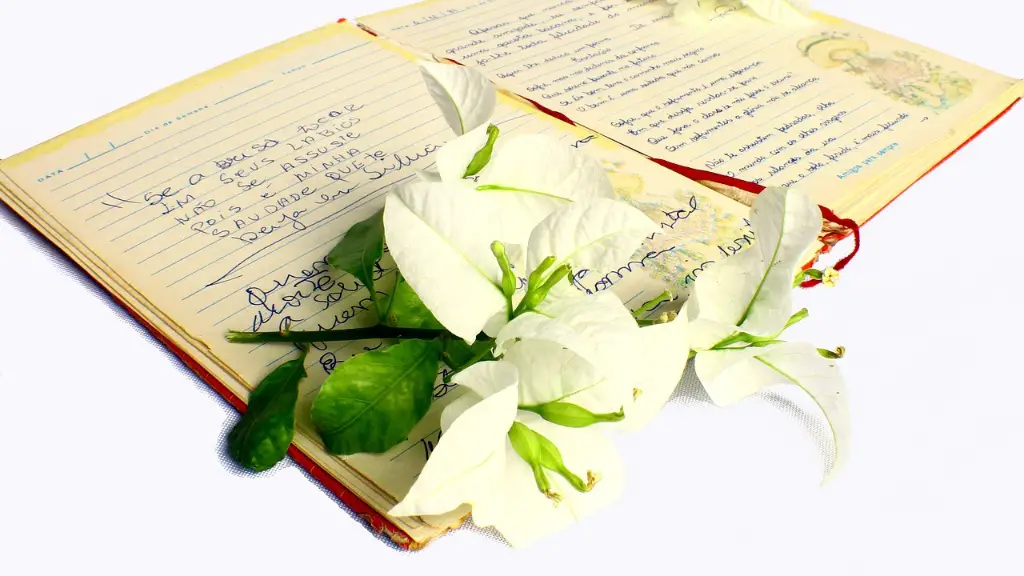Understanding the Types of Poetry
Poetry is written in a structured format designed to evoke emotion or tell a story. By understanding the different types of poetry, you can develop your writing style, explore ideas, and craft emotionally engaging pieces. From freestyle rhyming poems to sonnets, haiku and more, there are many styles of writing to play with. Whilst style is often determined by the poem’s purpose and the poet’s own preferences, it’s important to have an understanding of the fundamentals in order to craft beautiful, impactful poems.
Improving Writing Style
Whilst it’s important to understand the jargon used to describe the different structures and types of poetry, it’s also important to focus on your own writing style. Evaluate your words and sentences, as well as the emotions you’re trying to convey. Are the words lyrical and beautiful? Are you using vivid descriptions to give the reader a clearer picture of what you’re trying to portray? It’s also important to consider how different words convey different messages to the reader, whether it’s direct or indirect. For example, using words such as ‘float’ rather than ‘walk’ can give the reader a more serene feeling.
Rich Vocabulary and Imagery
Adding robust language to your poetry can be extremely effective in improving its quality. Swap out generic terms and include descriptive words and imagery instead. The use of metaphors and similes can take your poetry to a much higher level. Let your readers feel and experience what your poem is about by comparing it to something else and exploring the different emotions associated with it. Additionally, try to form sentences in ways that are unusual and memorable, so that your readers can truly get lost in the imagery of your poem.
Incorporating Referencing
Integrating references from other texts, music, and art can help to enrich your poem and give it greater depth. Consider the tone of your poem and search for material that resonates with it. Incorporating allusions can be a powerful way of adding layers and telling stories without having to explicitly spell it out for the reader. References can also help to set the mood of your poem and help the reader to better connect with what they are reading.
Improving Clarity and Brevity
Brevity can be key in poetry. The clearer your message is, the easier it is for readers to understand it. Choose your words with intention and take out anything that might confuse your readers or cause them to misinterpret your meaning. It’s also important to think carefully about the relationship between the words, sentences, and stanzas, and pay attention to the way the words progress from one line to the next. Where necessary, create space for your readers to explore and interpret for themselves.
Structuring Your Ideas
Many times, poets end up rambling in their poems because they can’t find an effective structure to express their ideas. Having a predetermined structure can help you determine the overall length of your poem and help you to create a logical flow. Again, the structure of your poem will depend on the purpose it’s meant to serve, as well as any formal requirements.
Developing Your Poetry Techniques
Most of our skill in writing poetry is improved with practice. Think about your poem’s topic and try to come up with a unique take on it. Pay attention to the way you choose to share your ideas, and get feedback from other poets at writing workshops and competitions. Learn from their experiences and ask questions on how you can improve.
Using Rhyme
Using rhyme to structure your poem is a great way to improve your wordsmithing skills and create a tight structure for your poem. Experiment with different rhyming patterns and determine which will best convey your message. Remember to use words carefully and focus on the flow of your poem. Get creative with your rhyme, using words that are usually not associated with each other to create an interesting effect.
Exploring Interconnected Experiences
Whilst it can be easy to just write about one single experience, exploring different facets of a person’s life can help to create a richer poem. Try to think broadly, and include various interconnected experiences which will help to move the poem forward. Writing about diverse topics can help to bring out the unique qualities in a poem and open up room for interpretation.
Explaining Difficult Emotions
Emotions are a major component of poetry, and it can be difficult to describe intense feelings in words. Yet, as poets, it’s important to learn how to put into words these complexities and make the reader understand the emotions behind the poem. Pay attention to the diction you use and mix words to better express the idea or feeling. As you’re writing, take note of the types of words that are the most impactful in conveying the emotion you’re trying to express.
Reading Other Poems
Reading other poets’ work can be an invaluable learning experience. It gives you an insight into the techniques and styles you can use in your own work. Most importantly, reading exposes you to different creative approaches and forces you to think critically about the poem’s message and find out what makes it unique. If a certain poem resonates with you, take time to analyze it and try to identify what makes it successful.
Editing
Editing is a cornerstone of any creative work, particularly when it comes to poetry. Take some time to read through your poem and reflect on its meaning. Is it saying what you want it to say? Can it be improved or tightened in any way? Whilst editing can be a difficult and tedious process, reading the poem out loud and going through the piece line by line can help to identify any areas that need improvement. Additionally, having another set of eyes read your poem can be immensely helpful in fine-tuning your work.
Focusing on Intended Message
Whilst creativity is essential in poetry, it’s important to always keep the intended message in mind when writing. Take a step back and ask yourself “What does this poem mean?”. Accessible poetry is commonly well-crafted, to the point, and still touches the reader emotionally. Consider the opening line and strive to make it as memorable and appealing as possible. As you progress through the poem, keep tweaking it until you capture the intended message and create a powerful, engaging poem.



